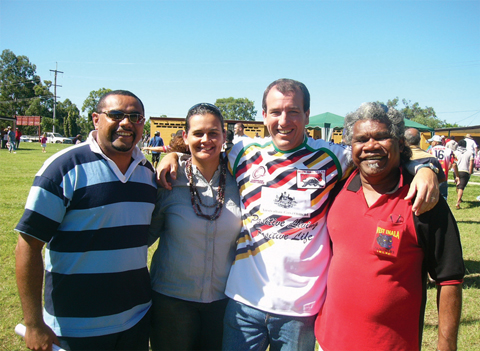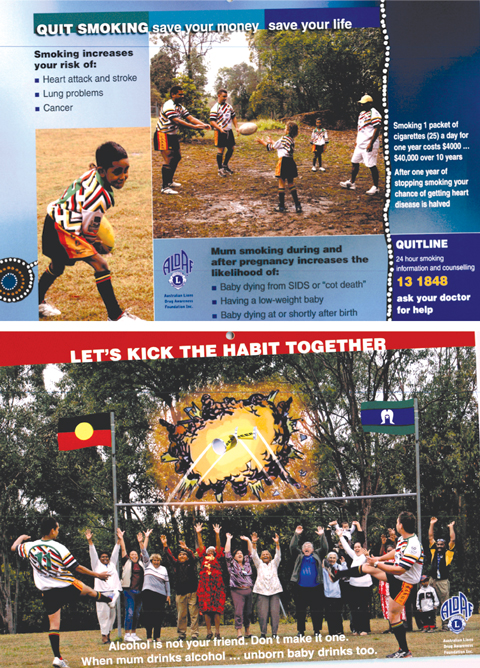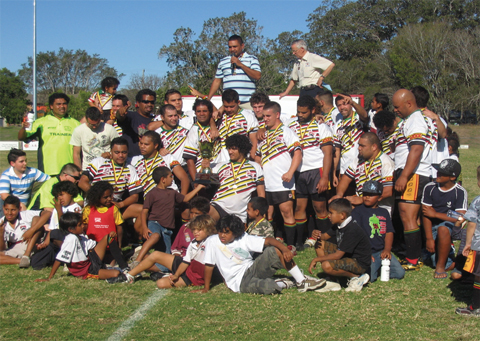I am an Aboriginal Kuku Yalanjii and Birri Gubba man. My Yalanjii people are from north of Mareeba, near Cairns, and my Birri Gubba connection is in Proserpine, right next to the beautiful Whitsunday Islands. My family grew up in Inala, on the outskirts of Brisbane, where we have lived for over 25 years. I come from a family of eight children. My mother is from Woorabinda and my father is from Proserpine and they are both Aboriginal.
Perhaps one of the biggest achievements in my life (besides having children) was being involved in establishing a Shared Responsibility Agreement (SRA) between my community and the federal government in 2006 (Box 1). The central aim of the SRA was to improve the health and wellbeing of Aboriginal and Torres Strait Islander men in our community via their engagement in rugby league. Rugby league has been an institution within our community, particularly among Aboriginal and Islander boys and men. For 5 years prior to the SRA, there was no opportunity for men in Inala to play rugby league, due to a lack of activities and sporting programs for Aboriginal and Torres Strait Islander men, and few Aboriginal and Torres Strait Islander men were likely to go outside the community to play rugby league. Without football in the community, few men played sport, and this contributed to many problems such as boredom, poor health, low self-esteem, and high intake of drugs and alcohol — all of which can lead to incarceration. Through conversations with the federal government, I developed a proposal to get a group of respected Aboriginal and Torres Strait Islander men to look at ways of getting our brothers involved in sport, employment and healthy living for themselves and their families.
The federal government agreed to fund two open rugby league sides at Inala, on the condition that men in the community participated in health, employment, education and mentoring opportunities within the community. My role as the Community Health Worker was to encourage Aboriginal and Torres Strait Islander men to come to the Inala Indigenous Health Service for adult health assessments, and to participate in other health promotion activities such as the Inala Indigenous Health Calendar (Box 2) and workshops on nutrition and physical activity. The men were also enlisted to participate in mentoring activities, such as coaching, refereeing, volunteering with junior teams, participating in local training and employment initiatives (if they were unemployed), promoting healthy lifestyles, and demonstrating positive behaviour on the sporting field and in the community. Through this process, many local men also participated in training that saw them become qualified referees, coaches and first aid officers.
Rugby league is continuing to thrive in Inala with the keen involvement of other Aboriginal and Torres Strait Islander men in the community. They have been playing the game for 3 years now without any funding assistance from the federal government. They won a grand final in 2007, were runners-up in 2008 (Box 3), and are very actively involved in community events and the junior club.
- John P Brady1
- Inala Indigenous Health Service, Queensland Health, Brisbane, QLD.







